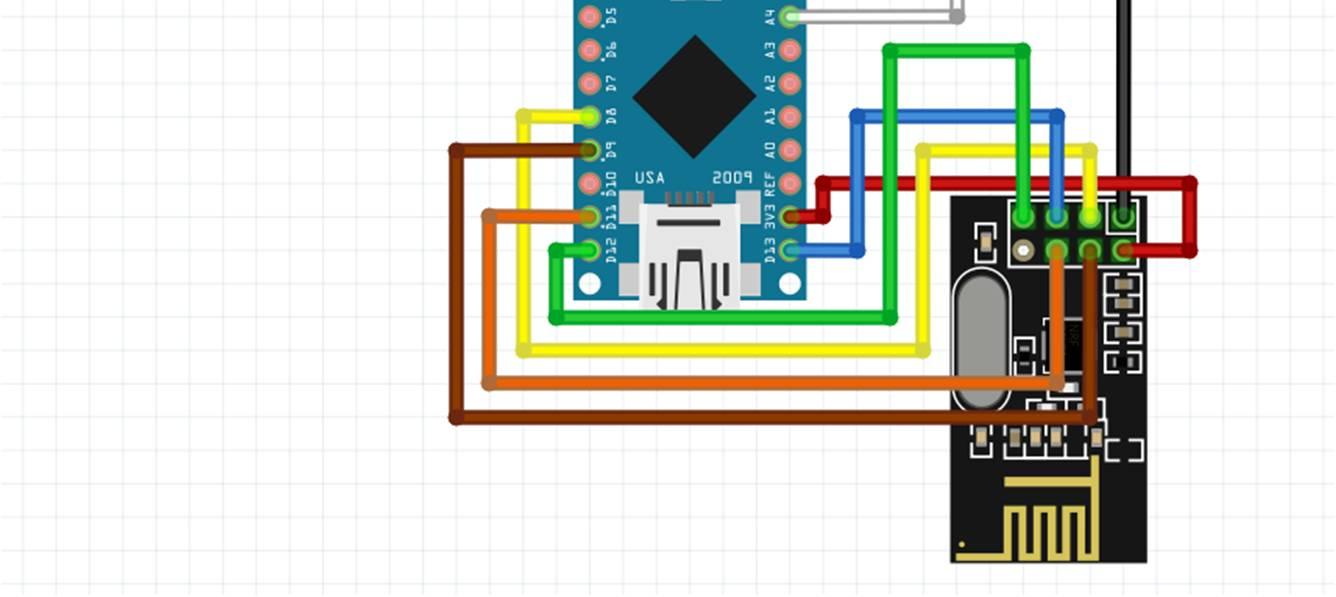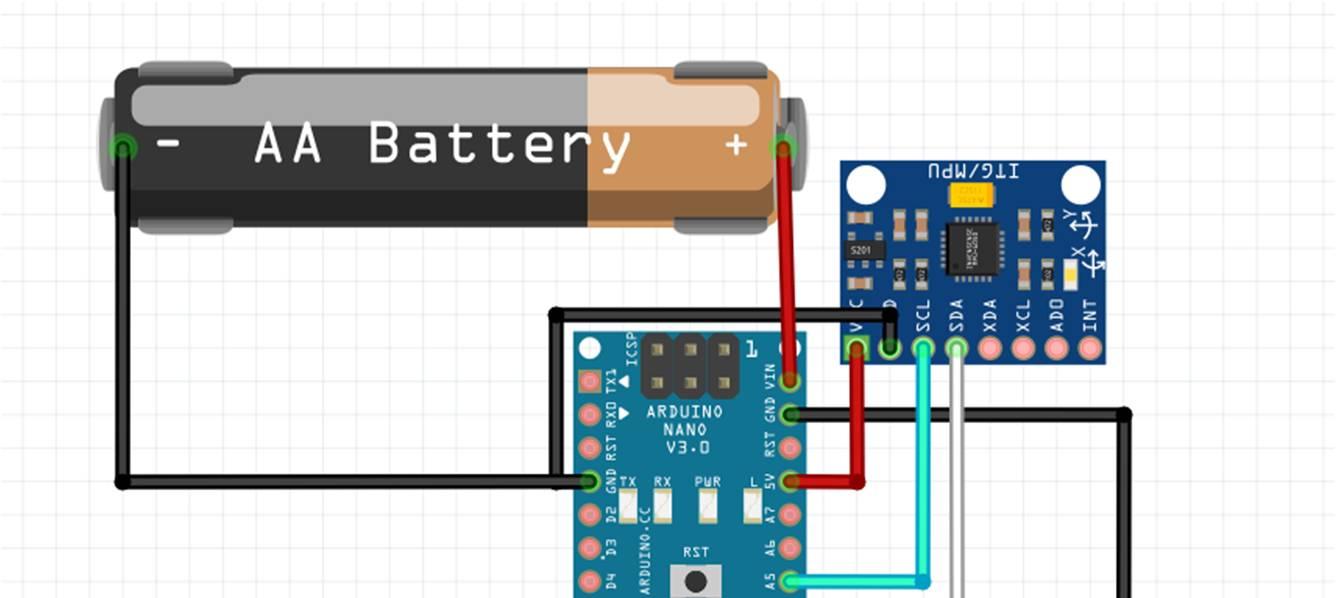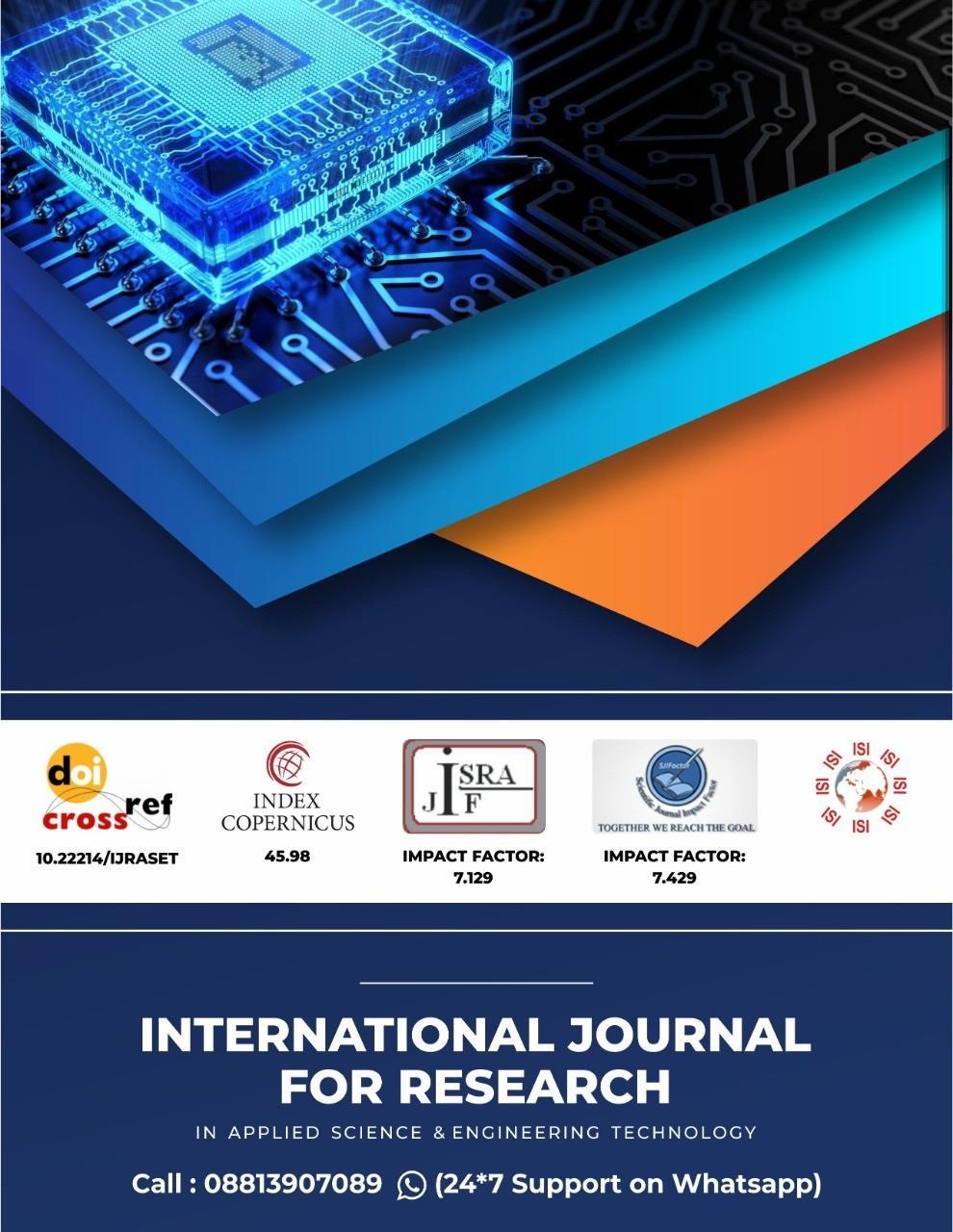https://doi.org/10.22214/ijraset.2023.50402


https://doi.org/10.22214/ijraset.2023.50402


ISSN: 2321-9653; IC Value: 45.98; SJ Impact Factor: 7.538
Volume 11 Issue IV Apr 2023- Available at www.ijraset.com
Dhanashree Wadaye1, Yash Nayak2, Vishal Yadav3, Maithili Shelar4, Ms. Savita Kulkarni5
5Department of Electronics and Telecommunication, St. Francis Institute of Technology, India
Abstract: In this proposed work, the gesture-controlled surveillance car is used for surveillance purposes. A surveillance robot is designed and implemented using an ESP32 cam module which can be used in various industry fields for surveillance purposes. The robot uses the ESP32 cam module which gives the user 360 views and 180 views of the robot. With the help of this user can control the user the robot in the user space. This ESP32 cam module is a Wi-Fi-based module. It works in the Wi-Fi range. The project consists of one 360-degree and one 180-degree servo motor for the tilt and pan operations. The robot also uses dc motors for its movement the robot. The gesture-controlled instructions are provided to the robot to control the locomotion of the robot. The user can control the surveillance using the Chrome interface. This robot can also be useful at excavation sites where human intervention is not possible and where this kind of robot comes into the picture in collecting, storing, and transmitting the data to the operator operating it from a distance.
Keywords: Arduino Nano, NRF24L01, MPU6050, LM2596, L298N, Radio Frequency (RF), ESP32, Internet Protocol (IP), HTTP, HT12E, Arduino IDE.
A gesture-controlled surveillance car is a vehicle equipped with sensors and cameras that can be controlled using hand gestures. This kind of technology allows the user to direct the car’s motion of the car with ease and efficiency. Gesture-controlled allows for a more intuitive and hands-free means of operating the car. These kinds of cars are very useful in situations where traditional controls may not be accessible or convenient, such as when wearing gloves or in a hazardous environment. In this project, a gesture controller-based transmitter and receiver using Arduino Nano, NRF24L01, and MPU6050 has been built for the locomotion of the car. The most important part of the project is surveillance for which an ESP32 camera module comes into the picture. This ESP32 cam module is a Wi-Fi-based module. The video captured and transmitted can be viewed using an IP address generated while uploading the code. The ESP32 camera module is mounted on a servo mechanism, allowing the user to pan and tilt the module as per the user’s requirement to conveniently operate the car.
Dhanashree Wadaye, Yash Nayak, Vishal Yadav, Dr. Vaqar Ansari – Gesture Controlled Surveillance Car with Robotic Arm: The surveillance car and robotic arm in this proposed work, both of which may be operated using a gesture controller, have been reviewed by the authors. [1] The main goal of this project is to create an all-in-one bot, which implies that it will accomplish the majority of activities rather than requiring various types and a large number of bots to complete each activity. Gesture inputs can be used to control the robotic arm and the surveillance car, which are both components of the project. Because they are so light and small, FPV (First Person View) camera modules are employed for the surveillance component because they can be installed in a very small location. The video that was captured will be sent to any RF (Radio Frequency) receiving displays so that the user can effectively operate the bot.
Dhanashree Wadaye, Yash Nayak, Vishal Yadav, Dr. Vaqar Ansari – Hand Gesture-Controlled Robotic Arm with All-Terrain Surveillance Car: In this proposed work, A gesture-based robotic arm and an all-terrain vehicle are intended to carry out a variety of practical activities. [2] The user’s gesture input determines how the robotic arm will move. The user may easily control it effectively by using a gesture controller. First-person view cameras have been introduced into the picture with a featured mechanism of pan and tilt put in a specific position per the user’s requirement and operation so as to avoid any kind of obstacles around the car. To provide a panoramic view of the front of the automobile, two FPV cameras can be set up side by side. To move the surveillance car, simple hand motions are necessary. For all-terrain applications, a conveyor belt and robust off-road tires can be employed. Additionally, the user can watch the robot virtually by utilizing a virtual reality device.
Rutwik Shah, Vinay Deshmukh, Viraj Kulkarni, Shatakshi Mulay, Madhuri Pote – Hand Gesture Control Car: The authors’ concept of relocating a physical object at a distance using only hand motions have been demonstrated in this research.

ISSN: 2321-9653; IC Value: 45.98; SJ Impact Factor: 7.538
Volume 11 Issue IV Apr 2023- Available at www.ijraset.com
[3] The convenience and comfort of operating the car can be attained using this concept, but the most crucial benefit is a physical cost reduction in both daily life and business. In order to create this project, the authors had the creative notion to combine the fields of embedded systems with the Internet of Things. The gesture-controlled automobile is mounted on the user’s hand and is input by an accelerometer. The direction of the car is indicated by a specific hand motion. An HT12E encoder will encrypt the values that are connected to Arduino and deliver them to a receiver after Arduino UNO has received the value produced by the accelerometer. The RF433 transmitter transmits the encoded information to the receiver. The values will be decoded by the HT12D decoder that is mounted on the vehicle. The L298 motor driver will subsequently get these decoded values. As soon as the L298 receives the order, it will give the motors the proper instructions.
Nakshtra Popli, Sarthak Batra, Kailash Masiwal, Chaitanya Mamgain – Surveillance Car Bot Future of Surveillance Car Bot: The authors of this suggested work have shown how to control a car utilizing a mobile phone and a Wi-Fi-based module. [4] This type of remotely controlled vehicle is useful for a variety of tasks, including military and espionage work. With the ability to communicate wirelessly through a Wi-Fi connection, this type of robot may be relatively portable and extend its range. The camera, motor driver, motor, battery, and wheels make up the robot’s essential parts. There are many different cameras that may be utilized, but for this project, we’ll be using an OV2640 camera and an AI-Thinker ESP32-CAM module with an ESP32-S processor. The microSD card port on the ESP32-cam module allows you to save the images or videos that are captured. A MicroSD card slot allows for the storage of pictures taken by the camera. To have a clear perspective and good eyesight surrounding the bot, it is possible to broadcast the video from the ESP32 via the HTTP protocol while browsing the web. The website that will transmit the live footage of the bot will also include some virtual buttons to control the robot’s movement. Wi-fi wireless connectivity is used to transfer the real-time video of the area surrounding the bot to the user’s smartphone.
Premangshu Chanda, Pallab Kanti Mukherjee, Subrata Modak, and Asoke Nath – Gesture-Controlled: In the research article, the project used a robot that was gesture-controlled by a smartphone and an Arduino. [5] In order to link the robot to a smartphone and operate it, they utilized an Arduino Atmega coupled with a Bluetooth module. Instead of using a gesture controller, the smartphone’s built-in sensor was utilized to move the robot. The gesture data is sent from the smartphone using Bluetooth. The Arduino receives the data and sends a signal to the motor driver, which causes the motors to move the robot in whichever direction the user desires.
A. Arduino Nano

Arduino Nano is a small, compact, and versatile microcontroller board that is designed based on the Atmega328P microcontroller chip. The Arduino Nano board comes with 14 digital input/output pins, 8 analog input pins, and 6 pulse-width modulation pins. It has a clock speed of 16 MHz and can be programmed using the Arduino IDE software. The board is also equipped with a USB port, which makes it easy to program and upload code to the board.
B. NRF24L01 Module
The NRF20L01 is a low-cost, low-power 2.4GHz wireless transceiver module that operates in the ISM band. It is designed for use in a wide range of wireless applications such as remote-control systems, wireless data transmission, and wireless sensor networks. The module has a built-in radio frequency (RF) amplifier, digital baseband processing, and a high-performance radio frequency transceiver. It can operate at a data rate of up to 2Mbps with a range of up to 100 meters in open space.

ISSN: 2321-9653; IC Value: 45.98; SJ Impact Factor: 7.538
Volume 11 Issue IV Apr 2023- Available at www.ijraset.com
The MPU6050 is a commonly used integrated circuit (IC) that combines a three-axis gyroscope and a three-axis accelerometer in a single package. It is designed to provide accurate and stable motion-tracking information, making it the best option in applications like robotics, drone, virtual reality, and many more. The gyroscope measures the rotational motion of an object around its three axes (x, y, and z), while the accelerometer measures the acceleration of the object along the same axes. It operates at a voltage range of 2.375V to 3.46V and has a low-power consumption mode, making it suitable for battery-powered applications.


The L298N is a popular dual H-bridge motor driver Integrated Circuit (IC) that is used to control the speed and direction of DC motors and stepper motors. It can handle a maximum current of 2A per channel. It operates at a voltage range of 5V to 35V, making it suitable for a wide range of motor types and power supplies. The L298N has a large heatsink to dissipate heat generated by the motors and requires an external capacitor to stabilize the power supply. It also includes built-in protection features such as thermal shutdown and over-current protection, which prevent damage to the IC and the motors


ISSN: 2321-9653; IC Value: 45.98; SJ Impact Factor: 7.538
Volume 11 Issue IV Apr 2023- Available at www.ijraset.com
The ESP32 camera module is a small-sized, low-cost development board that features an ESP32 microcontroller and a camera sensor. The camera module includes a 2-megapixel OV2640 camera sensor, which can capture images with a maximum resolution of 1600x1200 pixels. The ESP32 camera module also includes built-in Wi-fi and Bluetooth module, which allows it to communicate with other devices and the internet. It can be programmed using the Arduino IDE or the ESP-IDF. It supports image formats such as JPEG, BPM, and GIF and includes an onboard image processing unit (IPU).


The LM2596 is a voltage regulator IC that is widely used in electronic circuits to convert a higher voltage input into a lower regulated voltage output. It is a type of step-down Dc-DC converter. The Lm2596 has a wide input voltage range of up to 40V which makes it suitable for a variety of applications
A. Locomotion
The project focuses on gesture-based locomotion. The project consists of basic hand gestures to perform various tasks. The project uses both Arduino nano and NRF24L01 at the transmitter and receiver ends to transmit signals and perform the tasks according to the received signal. The transmitter also consists of MPU6050 which is an accelerometer/ gyroscopic module which is an important module to provide inputs for the motion of the robot the changes in the gyroscopic values move the car in a particular direction. The transmitter and receiver codes are coded with the same address so that they can sync properly and connect efficiently. The receiver is then connected to the motor drive L298N module to operate according to the inputs received from the receiver module.
ISSN: 2321-9653; IC Value: 45.98; SJ Impact Factor: 7.538

Volume 11 Issue IV Apr 2023- Available at www.ijraset.com
B. Surveillance
In this revolutionizing world, surveillance methods also have evolved over the years. In industries, the need for surveillance has increased immensely. Almost every field or every sector requires surveillance for proper functioning and the security of their plant or organization. There are various methods or devices available in the surveillance market. The proposed work comprises surveillance with the help of the robot which can be very efficient for the user to monitor the environment. The proposed work comprises an ESP32 cam module that is installed in the robot. The surveillance cam can be controlled with the help of the chrome browser. The serial monitor provides the Internet Protocol (IP) address for controlling the ESP32 cam module.




ISSN: 2321-9653; IC Value: 45.98; SJ Impact Factor: 7.538

Volume 11 Issue IV Apr 2023- Available at www.ijraset.com
In Fig. 10. Block diagram, the block diagrams display the whole information about the functioning of the bot and the arrangement of the components according to the block diagram. The two main parts of the robot are surveillance and locomotion. In the surveillance part according to the block diagram, the ESP32 cam module which plays a vital role in surveillance is connected to a Buck converter. A Buck converter is basically used to control the input voltage to the ESP32 cam module. The ESP32 cam module requires only 5V for functioning so the buck converter manages the input voltage to the ESP32 cam module. The power supply provides input power to the motor driver, the Servo motors, and the buck converter. The servo motors are used for pan and tilt motion of the camera that is 360 degrees and 180-degree views around the bot. The power of Lithium batteries is connected to both at the transmitter and the receiver. The output for surveillance is can be viewed on the web browser with the IP address obtained while programming the ESP32 cam module at the serial monitor. The gesture-based receiver will receive the command from the gesture-based transmitter for the locomotion of the bot.




ISSN: 2321-9653; IC Value: 45.98; SJ Impact Factor: 7.538

Volume 11 Issue IV Apr 2023- Available at www.ijraset.com
The results, in Fig. 11. display the model of the proposed work. Fig. 12. displays the output obtained from the web browser. The IP address is obtained while programming the ESP32 cam module through Arduino IDE which can be used to get the live streaming of the data collected from the ESP32 cam module. As displayed in Fig. 12. ESP32 cam module the Internet Protocol (IP) “192.168.1.104” is obtained while programming the ESP32 cam module The gesture-based transmitter output can be checked at the serial monitor of the Arduino IDE. The serial monitor provides output in different axis. If the serial monitor’s output changes in +x, or -x direction then the robot moves in a forward or backward direction respectively. If the serial monitor’s output changes in +y ory then the robot moves left or right respectively.


The motive of the proposed work is to develop an efficient robot that can perform surveillance with gesture-based locomotion. The field of surveillance industry is immensely growing and various technologies are emerging for efficient surveillance of the environment in an industry or organization. The proposed work uses an ESP32 cam module which is Wi-Fi based on the limit of


ISSN: 2321-9653; IC Value: 45.98; SJ Impact Factor: 7.538
Volume 11 Issue IV Apr 2023- Available at www.ijraset.com
surveillance is only for throughout the Wi-Fi range or bandwidth. The proposed work uses Li batteries power to the robot. Also, one can use a transmitter-receiver to control the robot which would also be an efficient method
[1] Dhanashree Wadaye, Yash Nayak, Vishal Yadav, and Dr. Vaqar Ansari, “Gesture-controlled surveillance Car with robotic arm”, Journal for Basic Sciences, ISSN NO. 1006-8341 vol. 22, Issue 10, 2022.
[2] Dhanashree Wadaye, Yash Nayak, Vishal Yadav, and Dr. Vaqar Ansari, “Hand Gesture-Controlled Robotic Arm with All-Terrain Surveillance Car”, International Journal for Research in Applied Science & Engineering Technology (IJRASET) ISSN: 2321-9653, Volume 11 Issue 2023.
[3] Rutwik Shah, Vinay Deshmukh, Viraj Kulkarni, Shatakshi Mulay, and Madhuri Pote, “Hand Gesture Control Car”, In Proceedings to ICSITS – 2020 Conference, International Journal of Engineering Research & Technology, ISSN: 2278-0181.
[4] Nakshtra Popli, Sarthak Batra, Kailash Masiwal, and Chaitanya Mamgain, “Surveillance Car Bot Future of Surveillance Car Bot”, International Journal of Engineering Research & Technology, ISSN: 2278-0181, Vol. 10 Issue 10, October-2021.
[5] Premangshu Chanda, Pallab Kanti Mukherjee, Subrata Modak, and Asoke Nath. Gesture-Controlled Robot using Arduino and Android. International Journal of Advanced Research in Computer Science and Software Engineering, Volume 6, Issue ISSN: 2277 128X, (2016).
